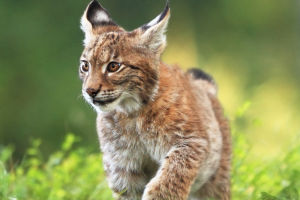Camel Survival Secrets
Lykkers, camels are truly desert wonders. Known as the "ships of the desert," camels have evolved extraordinary adaptations that allow them to thrive in some of the harshest environments on Earth.
From their humps to their hooves, every part of their body is designed for survival in the blistering heat and barren landscapes of the desert.
But there's more to these creatures than meets the eye. Let's dive into the fascinating world of camels and uncover the secrets behind their survival.
Water Storage: Fact or Myth?
One of the most well-known features of a camel is its hump. Many people believe camels store water in their humps, but that’s a common misconception. The hump is actually a large mound of fat. This fat acts as an energy reserve, allowing camels to go for long periods without eating. When food is scarce, their bodies break down the stored fat into energy. This helps camels survive in environments where food and water can be hard to come by.
While camels don’t store water in their humps, they are remarkably efficient at conserving it. Camels can drink up to 40 gallons of water in one go, and their bodies are designed to minimize water loss. They can go without water for up to two weeks, thanks to their ability to withstand dehydration. Their kidneys are also highly specialized, producing concentrated urine to reduce water loss, and they can tolerate extreme changes in body temperature to avoid sweating and further dehydration.
Surviving Extreme Heat
Camels have developed numerous ways to deal with the intense heat of the desert. Their thick coats, which might seem counterintuitive, actually protect them from the sun’s rays by acting as insulation. During the day, their body temperature rises, which reduces the need for sweating. At night, their temperature drops, helping them stay cool.
Additionally, camels have long eyelashes and bushy eyebrows to shield their eyes from the blowing sand. Their nostrils are also uniquely adapted; they can close them completely to prevent sand from entering, which is particularly useful during desert storms. Camels even have tough, leathery mouths that allow them to eat thorny desert plants without injury.
Adaptable Feet for Desert
Terrain Walking across the shifting sands of the desert is no easy task, but camels are built for it. Their large, flat feet spread their weight evenly, preventing them from sinking into the sand. This is one reason camels are often used as transportation in desert regions—they can easily carry heavy loads across vast distances without getting bogged down.
Unique Diet and Digestive System
Camels are not picky eaters. In fact, they are able to survive on vegetation that other animals would avoid. Their diet often includes dry grasses, thorny plants, and salty desert shrubs, which most other creatures couldn’t digest. Camels have a three-chambered stomach that allows them to efficiently break down tough plant material and extract the nutrients they need.
In times of extreme scarcity, camels can even go for long stretches without food. Their ability to store fat in their humps allows them to survive these lean times. It’s this resilience that has earned them a reputation as one of the toughest animals on the planet.
The Social Side of Camels
Beyond their survival skills, camels are also known for their social nature. They live in herds led by a dominant male, and they communicate with each other through a variety of vocalizations, including grunts, moans, and roars. Despite their sometimes grumpy appearance, camels can form strong bonds with humans and are often domesticated for transportation and farming.
Lykkers, camels are a testament to the power of adaptation. Every part of their biology has evolved to withstand the brutal desert environment, making them one of nature’s greatest survivalists. From their fat-storing humps to their sand-proof nostrils, camels are perfectly suited for life in the desert.


